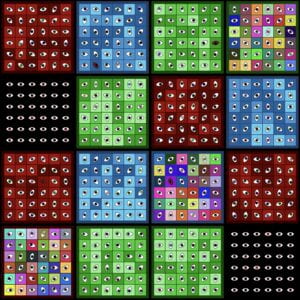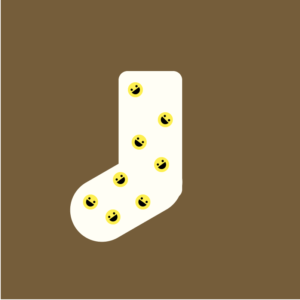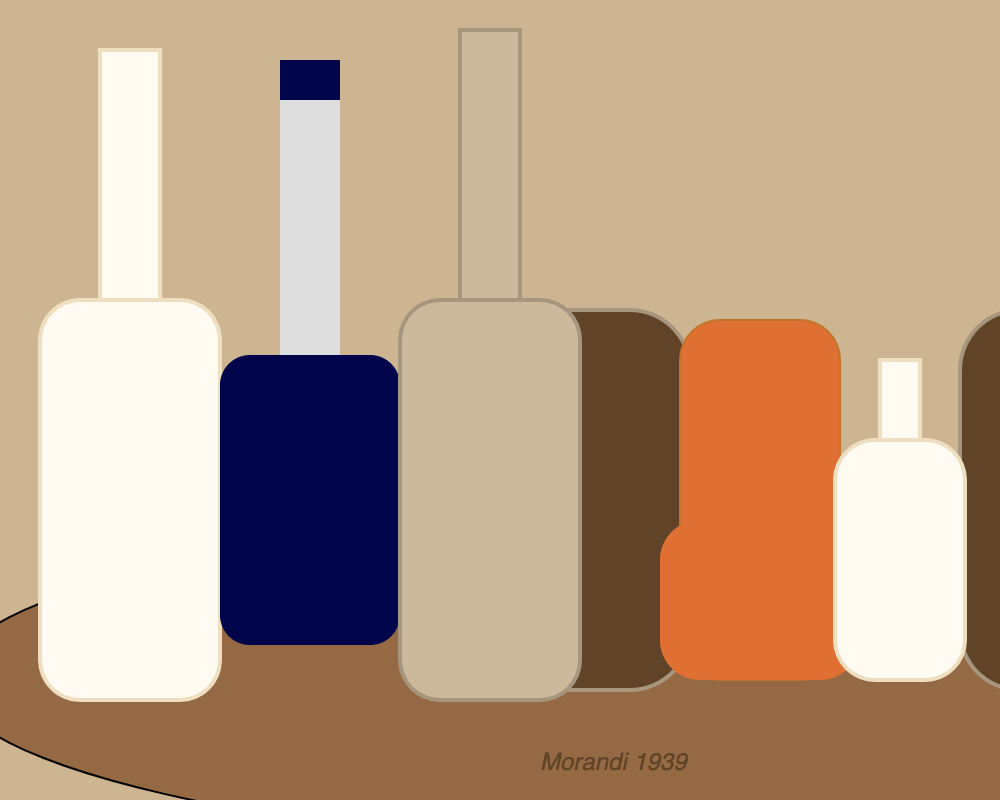For my final project, I decided to make a riddle game. The story of the game is that the player is trying to escape a dungeon, and while the player is on their way to the exit, a monster mysteriously shows up. The monster then informs the player in order to survive, they must answer all of the monster’s riddles. The player will have three chances or lives to guess the answer correctly for each riddle. Otherwise, the monster will kill them. If the player guesses correctly, they will proceed to the next level, and the number of lives will reset back to three, making the monster angrier. The riddles will become more challenging as the levels progress. For the scope of this project, I decided to implement only nine riddles. The riddles will be randomly sorted within each difficulty level. If the player fails and loses the game, they can attempt the riddles again from the beginning (but the order of the riddles will be shuffled). I used the Bloodborne Soundtrack OST – Main Menu Theme to give the game an eerie ambiance. I also added more sound effects such that if the player guesses wrong, dies, or the “game over” message shows, etc., a sound will play respectively to respond to the situation to make the game more interactive.
Initial Sketch

Final Result
References
Bat, Victoria. “The Smile of a Monster with Sharp Fangs.” Smile Monster Sharp Fangs Stock Vector (Royalty Free) 1965435370, https://www.shutterstock.com/image-vector/smile-monster-sharp-fangs-1965435370.
“Blood Splatter Png Transparent Background – Gunshot Blood Splatter PNG Image with Transparent Background PNG – Free PNG Images.” TopPNG, https://toppng.com/free-image/blood-splatter-png-transparent-background-gunshot-blood-splatter-PNG-free-PNG-Images_170589.
Bloodborne Soundtrack Ost – Main Menu Theme. https://www.youtube.com/watch?v=BhGZkdODoDM?list=PLCLeSTzz6trY_Qn_8vMnqO9TbqesAM4x6.
“Desktop Dungeons HD Wallpaper: Background Image: 1920X1200.” Wallpaper Abyss, https://wall.alphacoders.com/big.php?i=621649.
Game Over Sound Effect – SFX. https://www.youtube.com/watch?v=4crYlyIOcp8&ab_channel=RealSoundEffects.
Gods of Egypt (2016) – the Riddle of the Sphinx Scene (7 … https://www.youtube.com/watch?v=CUYNZo-8cDM.
“Help Me.” Help Me Font, GGBot, https://www.dafont.com/help-me.font.
Monster Sound Effects. https://www.youtube.com/watch?v=Z-sSy8urj-c.
Myth: Oedipus and the Riddle of the Sphinx. https://www.mwpai.org/assets/Education/MA-Resources-9-15-2016/Myth-Oedipus-and-the-Riddle-of-the-Sphinx.pdf.
“The Riddler.” Batman Wiki, https://batman.fandom.com/wiki/The_Riddler.
 One more main inspiration I had was The Riddler from DC comics. The Riddler, a riddle-obsessed supervillain, is one of my favorite characters in the show and I always wanted to make a project that had to do with riddles. The idea of having riddles be a timed thing that could lead to consequences was very unique and intriguing to me.
One more main inspiration I had was The Riddler from DC comics. The Riddler, a riddle-obsessed supervillain, is one of my favorite characters in the show and I always wanted to make a project that had to do with riddles. The idea of having riddles be a timed thing that could lead to consequences was very unique and intriguing to me. 












 In the image below, the data of three co-workers can be seen. The main reason that co-workers 1 and 2 are spending more time together than with co-worker 3 is that they started dating.
In the image below, the data of three co-workers can be seen. The main reason that co-workers 1 and 2 are spending more time together than with co-worker 3 is that they started dating.  The main reason I love this project is that it teaches a variety of lessons such as the importance of considering the collection process. It also shows us each person can have their very own lives where they do their own things but in the end, they will still make time to see others. This project just showcased the lives of four different groups of people and it showed how different they are in their own ways and how people behave in different dynamics. Additionally, it was only for one month, so imagine how nice it would be to collect data for other groups for longer periods of time to analyze their behaviors and try to understand their motives and what they do in life.
The main reason I love this project is that it teaches a variety of lessons such as the importance of considering the collection process. It also shows us each person can have their very own lives where they do their own things but in the end, they will still make time to see others. This project just showcased the lives of four different groups of people and it showed how different they are in their own ways and how people behave in different dynamics. Additionally, it was only for one month, so imagine how nice it would be to collect data for other groups for longer periods of time to analyze their behaviors and try to understand their motives and what they do in life. However, as I was experimenting with this project, I drew inspiration from my personal experience of constantly feeling judged by others. Every time I go out, I always get the feeling that there are people watching me, leaving me always on the lookout for who may be looking at me and wondering why they do so. I try to make sense of the way people perceive me by attempting to see myself through their eyes. The motifs of eyes and perception persisted through the planning phase of this project, which gave my work If We Had Your Eyes its name.
However, as I was experimenting with this project, I drew inspiration from my personal experience of constantly feeling judged by others. Every time I go out, I always get the feeling that there are people watching me, leaving me always on the lookout for who may be looking at me and wondering why they do so. I try to make sense of the way people perceive me by attempting to see myself through their eyes. The motifs of eyes and perception persisted through the planning phase of this project, which gave my work If We Had Your Eyes its name.  Collage of different outputs:
Collage of different outputs: I really enjoyed working on this project especially since it has a lot of personal meaning to me. I hope you enjoy experimenting with the outcomes and trying to get the rare ones!
I really enjoyed working on this project especially since it has a lot of personal meaning to me. I hope you enjoy experimenting with the outcomes and trying to get the rare ones! 

 The numbers would then be saved to a database. Mimi was giving the papers throughout the summer and realized that she was creating a ‘catcaller database’. Mimi then worked on another project she called Pathways which showcased people’s subjectivity around the collection. She collected one month’s worth of data from four groups – 3 coworkers, roommates, a family, and a couple. Using the data, she was able to investigate and study ordinary people through their personal data. For instance, in the image below which showcases the data of the family, one can see that the mother did not travel a lot which was obvious since she was pregnant. Moreover, when the mother gave birth a lot of the family members were usually in the same area and Mimi was able to figure that out only using the data.
The numbers would then be saved to a database. Mimi was giving the papers throughout the summer and realized that she was creating a ‘catcaller database’. Mimi then worked on another project she called Pathways which showcased people’s subjectivity around the collection. She collected one month’s worth of data from four groups – 3 coworkers, roommates, a family, and a couple. Using the data, she was able to investigate and study ordinary people through their personal data. For instance, in the image below which showcases the data of the family, one can see that the mother did not travel a lot which was obvious since she was pregnant. Moreover, when the mother gave birth a lot of the family members were usually in the same area and Mimi was able to figure that out only using the data.  Projects like these taught Mimi important lessons such as the importance of considering the collection process, and that if you haven’t considered the collection process you aren’t really considering the data. She also talks about how those with resources lack incentives and that collection takes more than it gives. This inspired her to make The Library of Missing Data Sets which is a mixed-media installation that showcases things excluded from society. Using this project and working with other small groups to work on different articles such as how people of color weren’t represented on Broadway (since there were no datasets that proved that this was true). She was able to see how small groups can collect data and make an impact. It also showed how people are better than machines when it comes to figuring out what isn’t being collected. One major issue in society is when it comes to selection and who chooses what is being collected and how information can also be manipulated. This is why it is exceedingly important to dig underneath the surface and try to think outside of the box. People like Mimi just show the importance of under-represented datasets and how they can be used to impact society positively.
Projects like these taught Mimi important lessons such as the importance of considering the collection process, and that if you haven’t considered the collection process you aren’t really considering the data. She also talks about how those with resources lack incentives and that collection takes more than it gives. This inspired her to make The Library of Missing Data Sets which is a mixed-media installation that showcases things excluded from society. Using this project and working with other small groups to work on different articles such as how people of color weren’t represented on Broadway (since there were no datasets that proved that this was true). She was able to see how small groups can collect data and make an impact. It also showed how people are better than machines when it comes to figuring out what isn’t being collected. One major issue in society is when it comes to selection and who chooses what is being collected and how information can also be manipulated. This is why it is exceedingly important to dig underneath the surface and try to think outside of the box. People like Mimi just show the importance of under-represented datasets and how they can be used to impact society positively.  Since I enrolled in the class late, I was able to choose and recreate an item that I lost. The item I recreated was one of my favorite socks which has an off-white color with a bunch of smiley faces all over it. Unfortunately, I have still not found them and I am still looking forward to the day of our reunion. Creating this drawing was interesting and took me longer than I thought it would, but I learned so much and according to my memory the sock looks very similar!
Since I enrolled in the class late, I was able to choose and recreate an item that I lost. The item I recreated was one of my favorite socks which has an off-white color with a bunch of smiley faces all over it. Unfortunately, I have still not found them and I am still looking forward to the day of our reunion. Creating this drawing was interesting and took me longer than I thought it would, but I learned so much and according to my memory the sock looks very similar! 